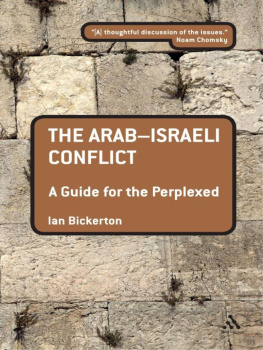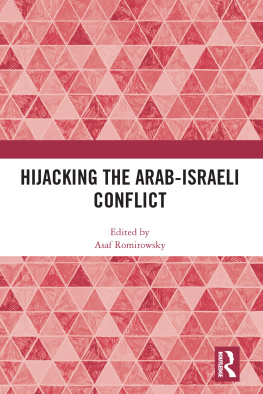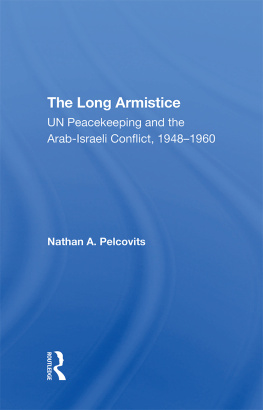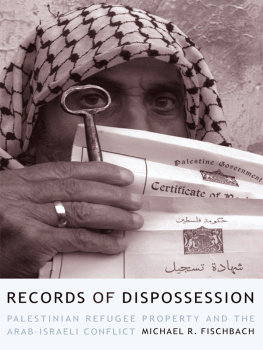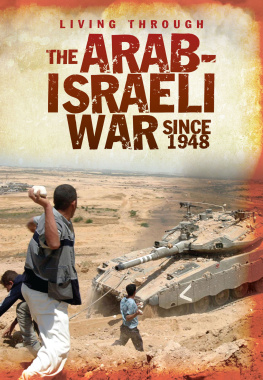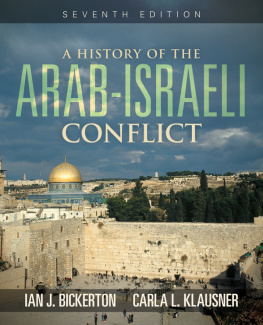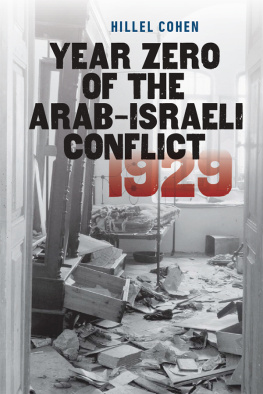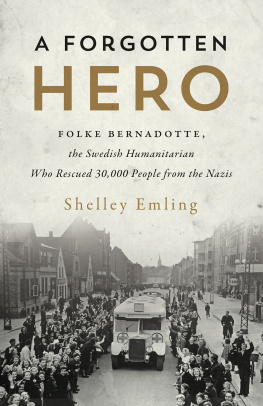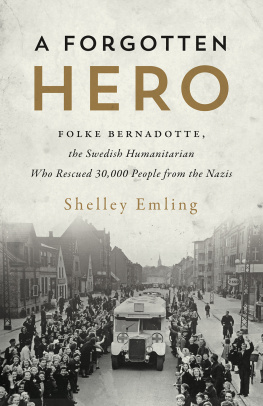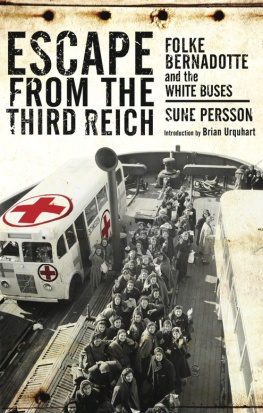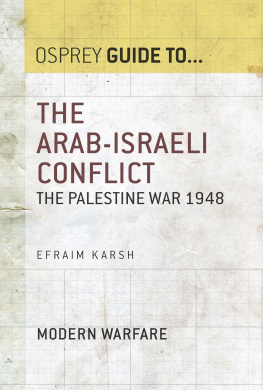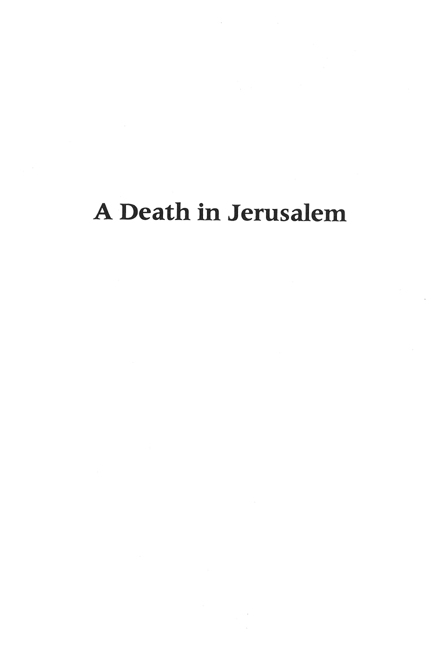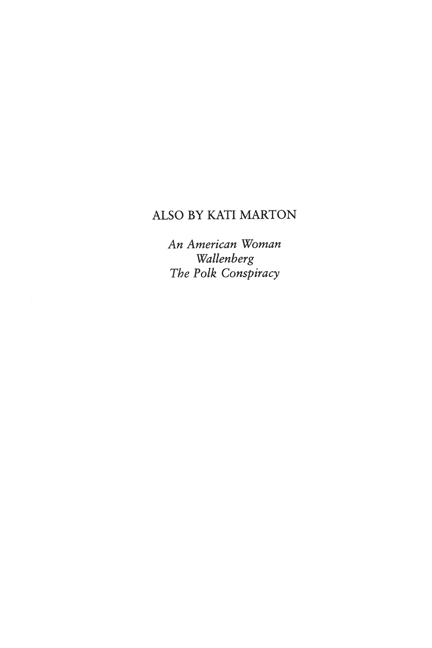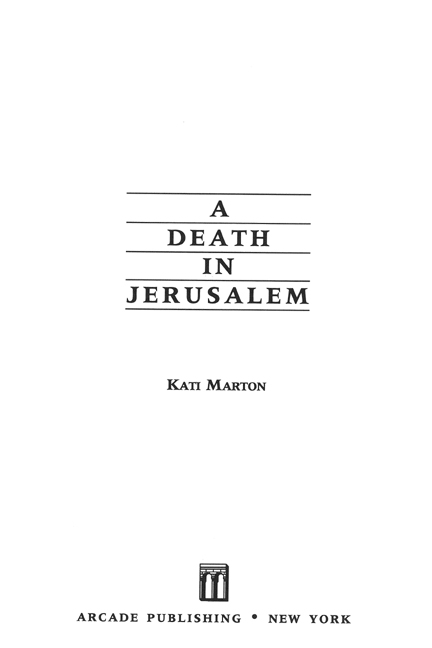For my daughter Elizabeth Jennings
For my son Christopher Jennings
And for my mother and father,
Ilona and Endre Marton
Copyright 1994, 1996, 2012 by Kati Marton
Map copyright by Vikki Leib
All Rights Reserved. No part of this book may be reproduced in any manner without the express written consent of the publisher, except in the case of brief excerpts in critical reviews or articles. All inquiries should be addressed to Arcade Publishing, 307 West 36th Street, 11th Floor, New York, NY 10018.
Arcade Publishing books may be purchased in bulk at special discounts for sales promotion, corporate gifts, fund-raising, or educational purposes. Special editions can also be created to specifications. For details, contact the Special Sales Department, Arcade Publishing, 307 West 36th Street, 11th Floor, New York, NY 10018 or .
Arcade Publishing is a registered trademark of Skyhorse Publishing, Inc., a Delaware corporation.
Visit our website at www.arcadepub.com.
10 9 8 7 6 5 4 3 2 1
Library of Congress Cataloging-in-Publication Data is available on file.
ISBN: 978-1-61145-672-1
Introduction to the Arcade Edition
WHEN A Death in Jerusalem WAS PUBLISHED IN A HARDCOVER EDITION a year ago, I had no way to predict how tragically prophetic this story of the origins of Jewish extremism would become. But on Saturday, November 4, 1995, forty-seven years after the assassination of Count Folke Bernadotte, a Jewish zealots gunfire again ripped through the body of a man of peace. Prime Minister Yitzhak Rabin had just finished addressing a rally in Tel Aviv. The seventy-three-year-old Rabin had exhorted his countrymen to follow him down the path of peace. There are enemies of the peace process, and they try to hurt us, Rabin told his rapt audience. But violence undermines democracy and must be denounced and isolated.
Moments later, a slight, dark figure closed in on the prime minister. Again the gunshots rang out. Again a man lay bleeding on a public square, and the flow could not be stanched. Again Gods name was invoked by the killer. I did this to stop the peace process, the assassin proclaimed. We need to be coldhearted.... When you kill in war, it is an act that is allowed. Count Bernadottes assassins might have chosen the same phrases to justify their crime forty-seven years ago. It would soon be apparent that Rabins killer, like Bernadottes, had more than divine inspiration supporting him. In the days to come the circle of conspirators widened to include more than half a dozen other members of a militant cell.
Like Count Folke Bernadottes assassination, Rabins murder was an impersonal crime, meant not so much to snuff out a life as to stop the peace process in its tracks. As in 1948, a struggle for the soul of Israel was at stake. Would the country be the province of absolutists, prepared for any act, no matter how violent, to preserve biblical Israel? Or would Israels future be as a secular, pragmatic, democratic member of the family of nations? Now, as then, the gunman was part of an underground movement of zealots for whom Eretz Israel is God-given land, nonnegotiable.
For Amir and his fellow conspirators, Yitzhak Rabin was a traitor to Zions cause. Rabin was prepared to trade land for peace. Amir, like Baruch Goldstein, who in 1994 gunned down Arab worshipers in the Hebron mosque, was a proponent of a messianic Judaism. Goldstein and Amirs spiritual roots converge with those who ambushed Bernadotte, the first United Nations Middle East peacemaker. Theirs is a righteous militancy that abides no debate. Amir, like Bernadottes assassins, claims the Bible and the Torah as his manuals for nation building. Peace treaties hammered out by shuttle diplomats around internationally sponsored negotiating tables are the work of a moser, a betrayer of Jews. A Jew who hands over Jewish land or wealth to an alien people, Rabbi Abraham Hecht, an Orthodox rabbi from New York, intoned during the last summer of Rabins life, is guilty of a sin worthy of the death penalty.
Yitzhak Rabins willingness to make pragmatic choices for Israels futureceding ever more autonomy to the Palestinians, for the sake of peacewas betrayal in the zealots eyes. Like Bernadottes assassins, Amir and his conspirators were fanatics with a good aim. All had been trained in the military and then practiced their deadly craft in small, clandestine cells, blessed by rabbis who fueled their zeal.
In 1948, unlike today, Israel was a frail and very young state. Prime Minister David Ben-Gurion was reluctant to tear at its fabric by energetically pursuing the mediators killers. Within days of the crime, Ben Gurion knew who had hatched the conspiracy to kill Bernadotte. Putting the survival of his country ahead of punishing the killers, he struck a deal with them. Rejoin Israeli society, lead productive lives, and you may live as free men among us. The unwritten contract was respected by both sides. The killers kept their end, the prime minister his.
It is different today. Israel, though grief-stricken, is strong. The state today has the self-confidence to exact a fitting punishment for this crime. What is more, and in striking contrast to Bernadottes assassination, Amirs bullets seem not to have shattered a peace process now too solidly entrenched. On the contrary, the assassination may have accelerated the process. On the first day following the end of the countrys official mourning, acting prime minister Shimon Peres presided over the disengagement of Israeli troops from the town of Jenin, the northernmost Palestinian city in the West Bank. By days end, Palestinian police were in full control of the city. But the deep wounds the assassin inflicted on Israels collective psychea Jew capable of killing a fellow Jew in cold bloodwill take far longer to heal.
A Death in Jerusalem traces the trajectory from the fiery rhetoric of early Zionist extremists Vladimir Jabotinsky and Abraham Stern (and by extension their spiritual heirs, Rabbi Meir Kahane and the militant rabbis who fueled Amirs rage) to the gunfire that felled both Folke Bernadotte and Yitzhak Rabin. The distance between rhetoric and gunfire is much shorter in a land soaked in the blood of the martyrs and villains of the worlds three great religions than it is elsewhere. Yigal Amir, like Bernadottes assassins in A Death in Jerusalem, acted with the calm of those convinced they are saving their people and land from the enemy. With the knowledge that God stands directly behind them, the assassins kill with impunity. In common with his deadly predecessors, Yigal Amir was ready to give his life for the cause of Eretz Israel. It is this willingness that makes fanatics on both sides of the Middle East divide the most dangerous barrier to peace in the most dangerous region in the world.
Kati Marton
November 15, 1995
New York City
Introduction to the Original Edition
ON FRIDAY, FEBRUARY 25, 1994, A BEARDED, UNIFORMED JEWISH SETTLER named Baruch Goldstein, armed with an automatic rifle, mowed down twenty-nine Muslim worshipers as they knelt in prayer in a Hebron mosque, the ancient Cave of the Patriarchs. The site of the massacre struck many with its bitter irony, for this cave is the one place on earth where both Jews and Muslims pray in the same building. Few places are so freighted with biblical and Koranic associations as the Cave of the Patriarchs, the burial site of Abraham and members of his family, sacred to both faiths.


